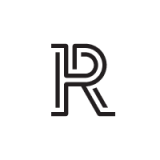# I. Introduction
The Sustainable Development Goals (SDGs) – a roadmap to end poverty, protect the planet, and ensure that all people can live in peace and prosperity by 2030 – cannot be achieved without the mobilization of both companies and financial market practitioners to ensure responsible, sustainable business operations.
Adopted by all UN Member States in 2015, the SDG framework builds on the Millennium Development Goals (MDGs) initiative, which was a global effort to end all forms of poverty. Currently, there are 17 interconnected SDGs, and 169 associated targets – with each government setting its own national targets guided by the global level of ambition but taking into account national circumstances.
# II. The RepRisk approach: an SDG risk lens
At RepRisk, we believe that in addition to proactively and positively contributing to the attainment of the goals, it is fundamental that companies and infrastructure projects do not harm or reverse progress on the SDGs. With that in mind, RepRisk launched its RepRisk SDG Risk Lens, which shows whether a company’s operations potentially reverse progress on the SDGs. More specifically, RepRisk’s SDG Risk Lens allows clients to:
Assess the SDG-related risk exposure of a company or infrastructure project by seeing which risk incidents are related to any of the 17 SDGs.
Benchmark companies from the same NACE sector against each other, or each of the 17 SDGs and across all SDGs combined.
Ensure that a holistic approach is taken to SDG analysis: before giving a company credit for some good activities to support one SDG, it must be ensured that they are not reversing progress on the other 16.
RepRisk mapped its research scope of 108 ESG risk factors to each of the 17 SDGs by analyzing both the overall goals and the underlying, measurable 169 targets.

Example of mapping an SDG to ESG Issues within the RepRisk research scope.
# III. 90,000 companies at risks for harming progress on the SDGs
To gauge the current state of risk in relation to the SDGs, RepRisk examined 24 months of data (April 2019 to April 2021) and found that out of the currently 300,000+ public and private companies with ESG risks, more than 90,000 companies – more than half – have ESG risks related to specific SDGs. SDG 16 (peace, justice, and strong institutions), SDG 3 (good health and well-being), and SDG 8 (decent work and economic growth) show the highest aggregated risk level. Aggregated risk level is the sum risk level of all exposed companies. Risk level scores are determined taking into account the number and severity of incidents the company has been linked to in the last two years for the respective SDG.



